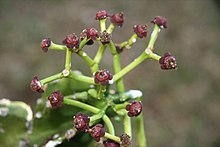Euphorbia_tanaensis
Euphorbia tanaensis
Species of flowering plant
Euphorbia tanaensis, commonly known as the Tana River euphorbia, is a critically endangered flowering plant from the family Euphorbiaceae. It is found in one location on the Tana River in Kenya. Initially identified from nine individuals in 1988, a subsequent survey in 2006 revealed that only four individuals remain, with no evidence of natural regeneration. Its habitat is under immediate threat from deforestation.[1]
This article's tone or style may not reflect the encyclopedic tone used on Wikipedia. (November 2023) |

